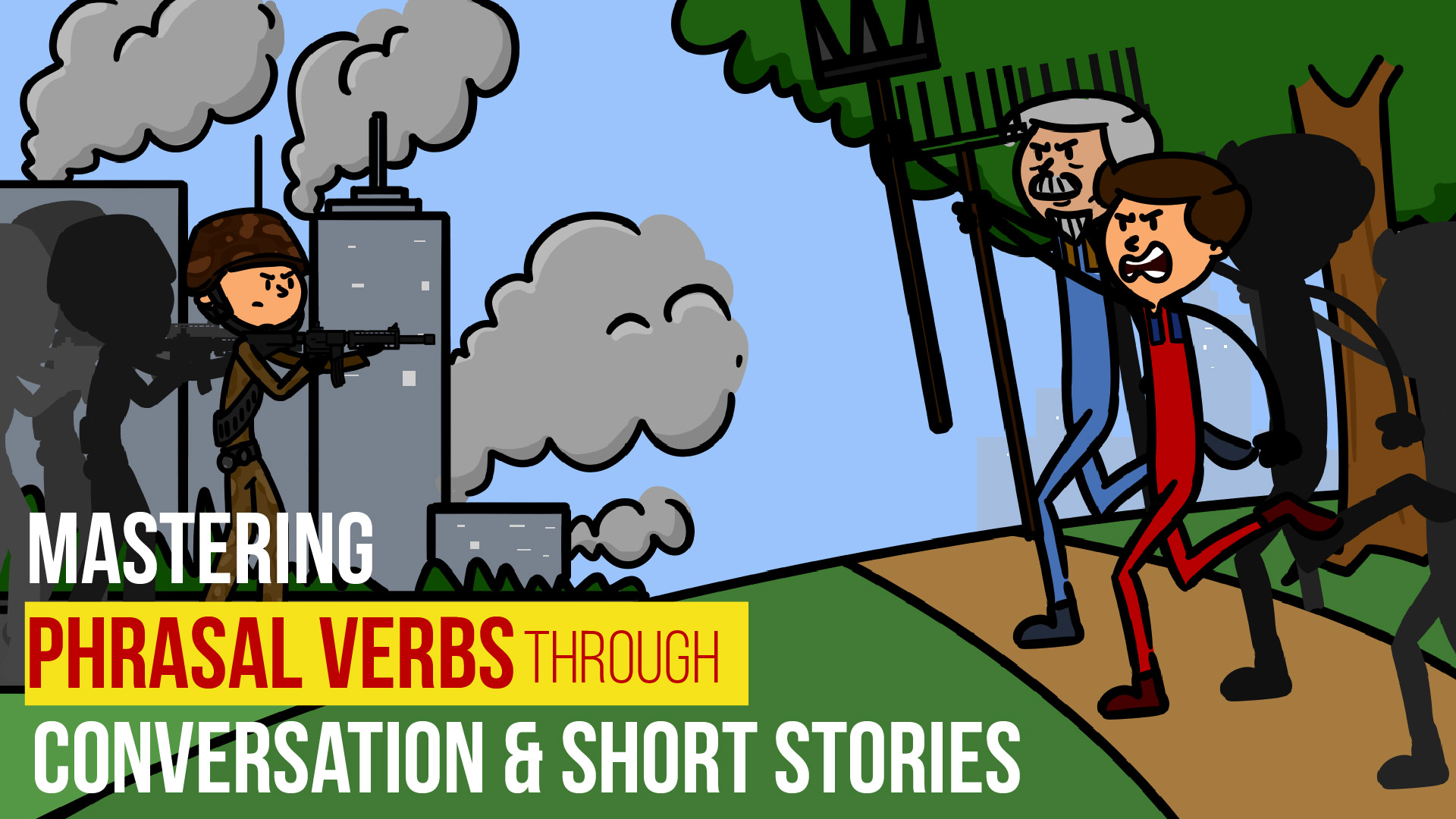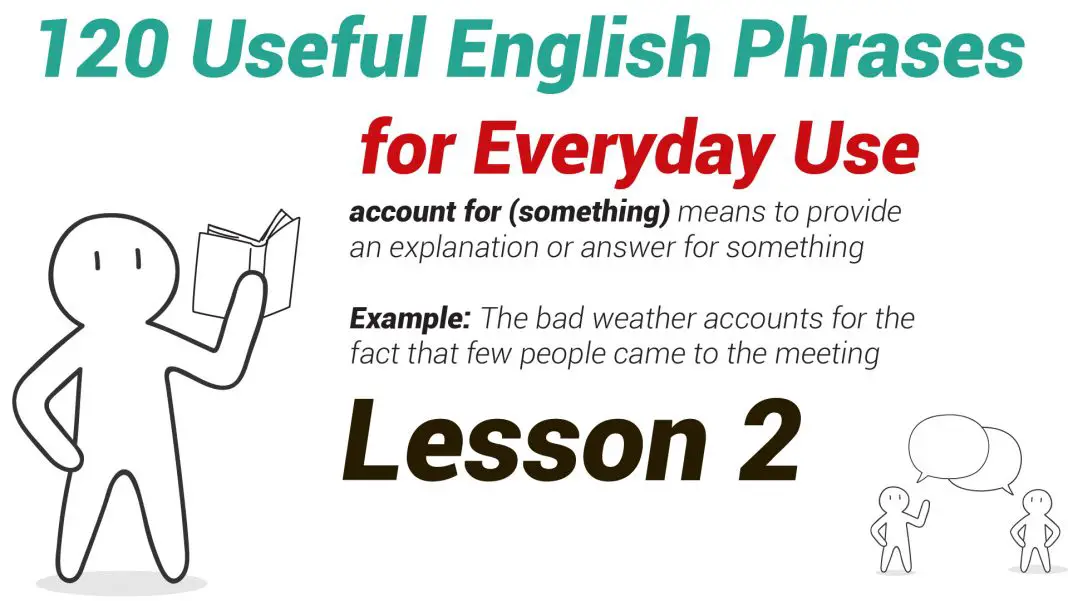How to Learn Phrasal Verbs in English Quickly
Hi everyone,
Today, I would like to share with you 6 tips to learn Phrasal Verbs in English quickly, this lesson was written by
——————
Let’s get started!
I’ve been teaching English for close to a decade. It’s never long before students start asking “How can I sound more like a native speaker?”
I’ve realised that a big gap for English learners is phrasal verbs. Teaching phrasal verbs has enabled my students to feel more confident and comfortable using English. It’s also been a great help for me as a language learner.
That’s why I’ve decided to share with you my best tips for learning phrasal verbs in English. If you’re learning English, I’m sure you’ll love these. And if you’re a native English speaker, knowing about phrasal verbs can be a big help with your language learning.
What is a Phrasal Verb?
Firstly, let’s outline briefly what a phrasal verb actually is!
Have you ever noticed how when you sometimes add a seemingly tiny word like a preposition or an adverb after a verb, the meaning can completely change? Crazy, huh? That’s phrasal verbs. They’re a little bit wacky.
Read more:
Look at some phrasal verbs in conversations below
Verb: Pick
“Pick” is just a normal verb, not a phrasal verb. Well, not yet at least. It can mean a few things. Let’s focus on one meaning for our example: to select or choose.
We need to pick which meal we’d like to eat.
But look what happens to ‘pick’ when we add the word ‘up’.
Phrasal Verb: Pick Up
Now, as if by some kind of wordplay magic, “pick” has become a phrasal verb. To ‘pick up’ can actually, mean many different things. We’ll look at just four of the possible meanings in this post: to improve, to collect someone or something, and to acquire knowledge.
Let’s look at an example for each of these:
- Improve: The weather is picking up lately, isn’t it?
- Collect someone: Can you pick up Jenny after football practice?
- Collect something: Can you pick up my parcel from the post office?
- Acquire knowledge: James picked up Spanish really quickly.
Phew! Who’d have thought that the addition of the tiny word ‘up’ could make such a difference?
Ready to learn some more? Here are my top tips to learn phrasal verbs in English.
1. Transitive or Intransitive
I hate to start by throwing these grammar words at you, but it helps a lot if you can understand the difference between transitive and intransitive verbs when learning phrasal verbs.
You may already be familiar with these words, but if not, here’s the jargon-free explanation:
- transitive = needs something or someone after the verb
- intransitive = stands alone
For example, the phrasal verb ‘bump into’ means “to meet someone unexpectedly” and always has to be followed by the person you weren’t expecting to meet. You can’t just say, “Yesterday, I bumped into. Haven’t seen her in years!” You have to say instead something like this: “Yesterday, I bumped into Sarah. Haven’t seen her in years!”
The exception to this would be if it were a statement that didn’t reveal ‘who’ you ‘bumped into’. For example, “I went to town yesterday. You’ll never guess who I bumped into.” Even here though, ‘who’ is the someone that you met unexpectedly. In the answer, this ‘who’ will change into someone’s name and be placed after ‘bumped into’; it just happens to appear earlier in the sentence.
However, some phrasal verbs are intransitive, which means they work fine on their own. For example, ’grow up’ means “to mature”. You never add an object. Here are a few examples of how this works.
- They grew up in England.
- Your daughter is growing up so fast!
- When I grow up, I want to be a popstar.
Something worth noting here is that some phrasal verbs can be either transitive or intransitive. For example, ‘wake up’, as I’m sure you know, means “to awaken”. If you want to say that you awaken, you simply say “I wake up”.
However, “I wake up Sarah” is an example of real English, but it means that you go into Sarah’s bedroom and shake her and blow an airhorn into her ear and throw water on her and scream until she opens her eyes. Or, you know, it just means that you gently tap her and say her name to ease her into the day. (If it’s the former, it’s fair to say Sarah needs to find new friends.)
2. Separable or Inseparable
As well as having to consider whether or not a phrasal verb is transitive or intransitive, we also have to become familiar with the idea of separable and inseparable.
Here’s a jargon-free explanation, as you asked so nicely:
- Separable = the verb and extra word(s) that make it a phrasal verb can be separated
- Inseparable = do not split the main verb from the other words in the phrasal verb. That’s just asking for trouble.
Let’s go back to poor old sleepy Sarah. When we’re talking about ‘waking someone else up’, the phrasal verb ‘wake up’ takes an object because we’ve added ‘someone else’. It is also separable because that ‘someone else’ can go between the verb ‘wake’ and the word ‘up’ and it still sounds ok, the meaning doesn’t change, and you won’t get any confused looks when you speak to native speakers. Hooray!
So as well as being able to say ‘I wake up Sarah’, we can also say ‘I wake Sarah up’, which means exactly the same thing. Pretty cool, huh?
Well, I hope you like that bit because not all phrasal verbs are that accommodating. Some are strictly separable and must be kept separate at all times like a pair of angry divorcees. For example, ‘keep something around’ means to keep something close to you. However, you can’t ‘keep around something’.
I always keep my phone around when I’m waiting for you to call.
Others are strictly inseparable. For example, ‘look up to someone’, which means to admire and respect someone. We can’t say ‘look someone up to’ or even ‘look up someone to’. Here’s an example of how it would work.
I really look up to my older sister.
Learning whether a phrasal verb is transitive/intransitive and separable/inseparable from the start will really help you to use it correctly as you go forward. I’d recommend writing a few example sentences showing off how it’s used to help you to remember. But where do you get these phrasal verbs from to begin with?
3. Context: A Simple Trick for Memorising Phrasal Verbs
It’s pretty easy to find list after list of phrasal verbs on the Internet and in grammar books, but that may not be the best way to learn them. Instead, try focusing on topics.
Imagine you’re watching a Formula One race. There are going to be lots of phrasal verbs you can use here involving ‘pull’ because many are to do with driving.
For example, Hamilton pulled up at the pit stop, Vettel is pulling away slowly, and Rosberg is pulling ahead. You can almost smell the petrol fumes.
Now think of an airport. There are as many phrasal verbs as suitcases here!
For example, we have to check in, the plane takes off in 10 minutes, don’t forget to look after your luggage.
A great way to do this would be to start with a list of phrasal verbs and a blank notebook. Write one topic or situation at the centre of a page in your notebook, for example, “in the classroom”. Now browse your list of phrasal verbs until you come across something that you might hear “in the classroom”. Add it to your list with an example and repeat. Oh yes, and don’t forget to note whether each is transitive or intransitive and separable or inseparable. It’s much easier to embed this in your memory as you learn each phrasal verb rather than struggle along later.
4. Use Stories to Lodge Phrasal Verbs in Your Memory
Once you’ve created your mind maps, you can take it one step further and create your own stories linked to a particular phrasal verb. Everyone loves a good story, right?
Stories make for more familiar, engaging, interesting, and memorable learning resources. If you’re creating them yourself, then even better.
It doesn’t matter if you don’t consider yourself a writer! Here are a few reasons why. Number one, no one has to read them if you don’t want them to. Number two, you don’t even have to write them down. Which skill is the most important for you to make stronger? Speaking? Why not try recording yourself saying your stories aloud as they come to you? Again, no one has to hear them if you don’t want to share. I promise I won’t tell.
5. Use Music to Discover How Phrasal Verbs are Used
Of course, there’s plenty of good advice about using music in language learning. Similarly to why stories are so great, music creates a memorable attachment and gives context.
To get started, try searching for the phrasal verb you’re learning in speech marks with the word ‘lyrics’ on YouTube. For example, [“carry on”] (http://www.azlyrics.com/lyrics/fun/carryon.html) lyrics. If you’re searching a separable phrasal verb, then you can perhaps try inserting pronouns too. For example, “wake me up” lyrics.
If you’ve got a huge list of phrasal verbs and don’t have time to do that for each one, I’ve put together this playlist to get you started. You’re welcome, friend!
6. Check Current Use of Phrasal Verbs by Reading the News
Once you’ve lost your voice from all the singing, head back to Google, but this time, instead of searching for lyrics, check out the news tab and try searching for your phrasal verbs.
I use this technique all the time with my students (and myself) when learning different languages. Not only does it give you a range of sources and therefore potentially a wide variety of language use, but it also brings you examples of current usage.
One thing you might spot from this exercise is how some phrasal verbs are used as nouns too. For example, when I searched ‘pick up’ for research for this post, this is what I got.
In the first example, the phrasal verb ‘pick up’ is being used to mean collect…

We’ve also got examples of it as a noun…

And as a noun with a different meaning…

Finally, check out this one…

Another verb, but with a different meaning. Here it means ‘to improve.
You don’t even have to go on to read all of these articles if you don’t want to. Google has given you exactly what you need on the first page. Thanks, Google.
By using these tips to take your phrasal verb knowledge further, you’ll not only enjoy the process more than simple rote learning, but you’ll also be creating longer-lasting memories of the words. Win-win.
Feeling inspired? I’ve recently released my first online course. Yay! It’s called Mastering English Phrasal Verbs Through Story and is perfect for you if you’re looking for something to give you exposure to over 500 phrasal verbs and a chance to create your own stories as part of the learning process. Find out more here.
Image credit: Rennett Stowe.
Source:





